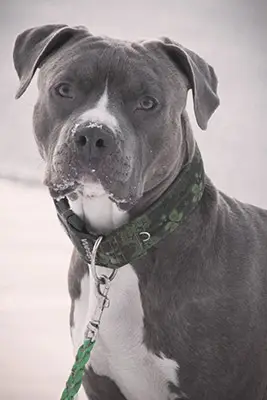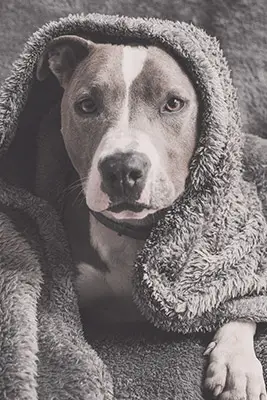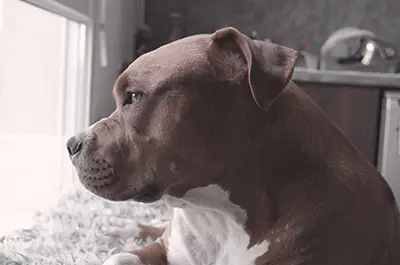Pit bulls get a bad rap. People often think of them as vicious and dangerous animals, but the fact is that pit bulls can be great family pets when given proper training and care. If you’re thinking about getting a pit bull or already have one, then this blog post is for you. I’ll answer some of the most common questions about pit bulls, and I’ll give you some tips on how to take care of your pet. So read on to learn more about these misunderstood dogs!
What is a pitbull, and where did they come from?

Pitbulls are a type of dog, specifically one of the many breeds that belong to the molosser category. Molossers include dogs like the English Bulldog, Mastiff, Boxer, Bull Terrier, and French Bulldog. The word “pitbull” can refer to either American or English Pitbulls, which are both breeds of the same dog. There’s some debate over whether these two types are different breeds or not, but that’s a question for another time. All you need to know is that other breeds are similar to your pet pitbull!
There’s some debate about the origins of the term “pit bull,” but most people agree that it came from some sort of dogfighting. The early history of the modern pit bull is murky, but there are some things we know for sure. We understand that these dogs were employed by the police force and by butchers and farmers.
Their job was to keep other animals in line and protect their owners during combat. This is where the term “Nanny dog” comes from. For a long time, people have been saying that these dogs were great with children and would protect them in dangerous situations. Unfortunately, this may be somewhat of an exaggeration. Although pit bulls are great with their own families and dogs, they aren’t always the best with strangers.
This is probably where some of the negative stereotypes about Pitbulls come from. Many people have stories about how their Pitbulls have been violent towards strangers, but these stories aren’t always accurate. Many people keep saying that their dogs are aggressive because they were either mistreated in the past or had a bad experience with another dog. But Pitbulls aren’t inherently aggressive, and if you get your dog young enough, you can make sure that they are well-behaved!
Are Pitbulls dangerous dogs?
Unfortunately, Pitbulls are one of the most discriminated breeds in existence. But for all you know, your next-door neighbor has a Pitbull in the backyard. There are a lot of dogs out there with bad reputations, but keep in mind that these dogs can be great pets if you give them a chance.
It’s also important to keep in mind that many of these dogs were turned into fighting machines against their will. The people who handled and trained these dogs were the ones causing them to be violent. There’s a big difference between an animal that was treated poorly and one that has been mistreated its entire life! If you want to make sure that your dog isn’t aggressive, you need to ensure that they are well-socialized and appropriately trained.
Are Pitbulls good dogs?
Pitbulls can be great dogs if you’re willing to take the necessary steps. These dogs play an essential role in our society, and they deserve a chance to interact with people outside of their own families. You can make sure that your dog is well-behaved and trained simply by taking the time to learn the material. There’s a lot of information out there on the internet, including some great sources of information by experts in the field.
If you’re interested in getting a Pitbull, either to keep as a family pet or to train for work, then there’s no reason that you shouldn’t. These dogs are some of the most interesting animals on earth, and there’s no reason to discriminate against them just because of their job history. All dogs deserve to be treated with respect, and there’s no reason why your Pitbull can’t get along with other animals or people.
How do I train my pitbull not to be aggressive and attack people or other animals?

There’s a lot of advice out there on how to train a pitbull not to be aggressive. There are a few ways to go about this, but keep in mind that results may vary depending on the individual animal. To train your pitbull not to be so aggressive, you need to start early and not let your dog develop any destructive behaviors.
You should start training your pitbull as soon as possible, even if you don’t plan on getting it until later in life. Your dog will develop bad habits throughout its life if it isn’t given a chance to learn good habits. If you can make sure that your dog has a good start, then you’ll be able to prevent a lot of potential problems from arising later.
For training your pitbull, you should employ the help of a professional and should use positive reinforcement and reward-based training. With this method, you can train your dog not to be aggressive, even if you deal with specific triggers or bad habits. There are a lot of tips out there for training your pitbull, so you’ll be able to find something that works for you no matter what.
How much exercise do Pitbulls need, and what kind of diet should they have?
Pitbulls need to be able to get out of the house for at least an hour or two every day. These dogs are very active, and they need to release some of that energy. The best way for you and your dog to get along is if your dog gets out and has the chance to run around and be active. If you’re not able to let your pitbull outside, then you should consider getting a dog treadmill, which is a great way to keep your dog fit and healthy.
When it comes to feeding your pitbull, you should ensure that you’re providing it with high-quality food. There are a lot of different kinds out there that you can feed your dog, and you should find something that is best for your dog’s age and weight.
It’s also vital that you’re feeding your dog the right amounts of food so that it can get the proper nutrition that it needs.
How can I make sure my home is safe for a pitbull?”
Your home must be safe for a Pitbull. You should make sure that there are no toxic chemicals around the house because your dog will try to eat anything that it can. Make sure there aren’t any small objects lying around, and make sure you don’t leave your dog alone for too long.
These are just a few of the things that you should look out for if you have a pitbull in your home. As long as you keep these things in mind, then there’s no reason why your pitbull can’t be happy in your home.
What are the most common health problems associated with Pitbulls?

Pitbulls tend to be more susceptible to certain health problems than other dogs. These issues can become exacerbated if you don’t ensure that your dog gets exercise and is fed properly.
The most common health problems associated with Pitbulls are hip dysplasia, heart disease, and cancer. Lousy breeding practices mean that these dogs aren’t always bred with the best health in mind, leading to various issues. You can avoid most of these problems by ensuring that you’re dealing with a reputable breeder.
Be sure to ask the breeder questions about previous health problems and any testing before breeding. If they aren’t doing those things, you might want to find a different breeder to have the healthiest dog possible.
How can I find a good Pitbull?
When searching for a good Pitbull, there are some things to keep in mind. The first thing you need to do is check with your local shelter or rescue to see if they have any available dogs. These dogs are usually very well-behaved, and they just need the right home to go to.
If you can’t find any available dogs at your local shelter, then you can always try to find a reputable breeder. It’s crucial that you only work with breeders who perform health tests and breed the best dogs. Remember that your dog’s ancestry will determine a lot about its potential problems, so you’ll need to find a breeder that has healthy dogs and uses proper breeding practices.
Be sure to check out reviews and ask the breeder questions before committing. Don’t just assume that you’re getting a healthy dog because the breeder seems reputable.
How big do Pitbulls get, and what is their lifespan?
Pitbulls can grow to be anywhere between 40 and 70 pounds. The size of your dog will depend on its gender, where it comes from, and its genetics. The biggest Pitbulls come from Staffordshire terriers, which are bred to be bigger than other types of Pitbulls.
The average life span of a Pitbull is between 10 and 12 years. Unfortunately, due to the lack of breeding practices within certain circles, some Pitbulls won’t live past the age of 8.
What are some interesting facts about Pitbulls?

Pitbulls are known as being one of the most loyal breeds of dogs. They’ll stick by your side no matter what, and they make excellent guard dogs.
These dogs are high-energy, and they need to be exercised often. Even if you can’t walk your dog every day, you must get it to do some exercise at least once a day.
It’s also very important that you make sure your Pitbull isn’t bored. These dogs are incredibly intelligent, and they’ll turn to destructive behavior if they aren’t given enough things to do.
They’re also great with children, and they make excellent family dogs. If you can make sure that you train your dog correctly, then the two of you will get along great.
Conclusion.
As you can see, there are many things to know about Pitbulls. These FAQs provide all the information you need before getting this dog as your next pet, from their history and temperament to training them or looking for a new one.

Meet Brenda Tillman: your go-to expert in Cognitive Behavioral Therapy! Not only is she a seasoned therapist, but she’s also a passionate mom blogger who never misses a beat. Dive deep into her insightful blogs, backed by her extensive coursework in Parenting Skills, Learning, and Education. Brenda’s heartwarming family – a son, two daughters, and their adorable pets – often take center stage in her writings. From parenting hacks and relationship tips to health & fitness nuggets, Brenda has been enlightening her readers for over half a decade. Stick around, and you’re bound to discover gems from a mom who wears many hats with grace!
Reviewed By: Joanna Perez and Marcella Raskin
Edited By: Lenny Terra
Fact Checked By: Gabrielle J. Smith
Photos Taken or Curated By: Matthew Mansour